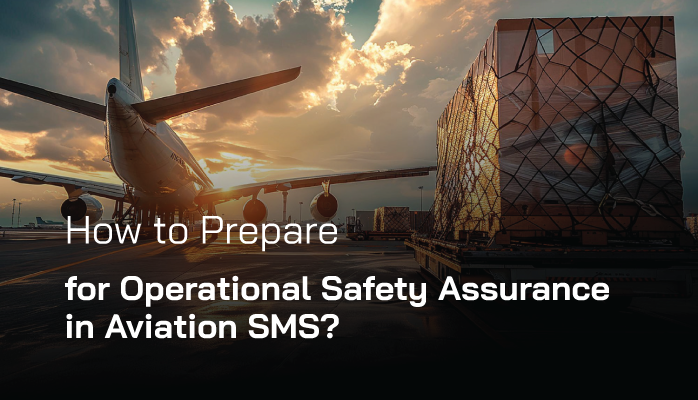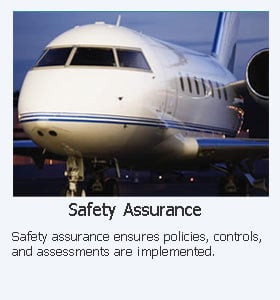Audit-Worthy Aviation SMS Implementations Take Considerable Time

Aviation service providers never implement their required aviation safety management system (SMS) quickly. In most cases, it will take three to five years for a medium to a large aviation service provider to completely implement their SMS.
You may scrape by in the early stages by pencil-whipping SMS requirements into shape, but an SMS is more than policies and pretty, well-formatted aviation SMS manuals.
There will be considerable SMS documentation to generate and regular safety promotion activities to coordinate, such as:
- safety newsletters,
- safety surveys; and
- safety meetings.
With all of this work, how will you ever make it to the safety assurance phase of your SMS?
Related Aviation SMS Safety Assurance Articles
- 4 Pillars | What Safety Assurance Really Means in Aviation SMS
- Best Tip for Safety Assurance Monitoring in Aviation SMS
- FAA Part 5 Compliance | Safety Assurance Performance Monitoring and Data Acquisition Components
Eat SMS Elephant One Bite at a Time to Reach Operational Safety Assurance
Every small operator implementing an SMS assigns the "safety manager" position to an existing full-time employee. This employee may already be a pilot or maintenance engineer. Safety manager duties are simply additional duties. Some very small operators may assign an administrative assistant as the safety manager. In these cases, operational department heads are more active in the risk management processes, leaving the safety manager for:
- SMS documentation;
- Safety assurance monitoring (auditing); and
- Safety promotion activities, which support safety assurance monitoring activities and subsequent safety reporting.
This may be you. If so, how do you continue to perform your existing job to a high degree of excellence while also implementing an aviation SMS?
To make your life easier, you should be implementing your SMS in a recommended phased approach, with each phase like a course of a meal. Otherwise, there will be no way for you to eat this huge SMS elephant.
Which SMS Phase are you in? Do you know? Many operators believe themselves to be in phase 4, but are fooling themselves. Here are some sample surveys to measure your SMS implementation. Be honest with yourself. You may be surprised that you are actually one or two phases behind your initial expectations.
SMS Implementation Surveys
- Phase 1 - Planning SMS Implementation Survey
- Phase 2 - Reactive Safety Management Processes Survey
- Phase 3 - Proactive & Predictive Safety Management Processes Survey
- Phase 4 - Operational Safety Assurance Survey

We commonly see small to medium-sized operators backslide on their SMS implementations. They may have reached Phase 4, but they failed to keep the SMS fire alive. This mostly occurs because of inadequate SMS performance monitoring strategies. How does your accountable executive monitor the performance of the SMS?
During Phase 1, you will be focused on
- performing a gap analysis;
- creating safety policies;
- drafting the SMS implementation plan;
- determining safety accountabilities and responsibilities to the SMS; and
- preparing the organization for change.
For your Phase 2 SMS implementation, you will be searching for a safety reporting system. This allows employees to submit hazards electronically and for managers to engage in required risk management activities, such as tracking corrective preventive actions and generating risk analysis reports.
Hazard identification and SMS training will also consume considerable time during Phase 2. Hazard identification training cannot be understated. Without hazard identification training, employees won't understand the difference between:
- hazards;
- risks; and
- risk controls and how risk controls in their work areas function.
You can do some of this work on paper, MS Word, and MS Excel. However, it is doubtful that you will have time to develop an aviation SMS "data management system" to track and manage all this data once you reach the "operational safety assurance" phase.
Operators that have decided to implement SMS should consider the different data management needs for all four pillars. They must ensure the systems they adopt will serve them well as management must continue to monitor SMS performance and address substandard safety performance whenever this is identified.
Very small operators can manage an SMS using spreadsheets and email. However, operators with 40 employees or more employees are recommended to use an SMS database instead of spreadsheets. If you are under EASA jurisdiction, reported safety issues must be stored in a database. Operators with high employee turnover are also recommended to use SMS databases to assure continuity when the safety manager leaves the company.
Low-cost, commercially available SMS databases are the lowest risk option should you decide between:
- Building SMS data management processes in-house;
- Using spreadsheets;
- Using a combination of spreadsheets and individual point solutions; or
- Altering existing software solutions to address SMS data management needs, such as SharePoint or help desk ticketing software.
When you choose a commercially available SMS database, it is recommended that the solution be built specifically to address aviation SMS requirements. The terminology and the processes used in commercial SMS databases align better than databases developed for other industries, such as:
- Chemical;
- Oil and gas;
- Automotive; etc.
Related Aviation SMS Software Articles
- How to Choose Aviation SMS Software - Educating SMS Professionals
- 20 Benefits of Aviation SMS Software
- Spreadsheets vs Software for Aviation Safety Management
Plan for the Safety Assurance Phase Early On
From what I have seen over the past dozen years, approximately 80% of safety managers start designing their SMS in a methodical, linear approach. My personality would make me do the same thing. I'm driving down the road and I see a fork in the road, I'll decide which way to go when I get there. Otherwise, I may get bogged down in the details.
However, if you take this linear approach, you may box yourself into a corner and cost yourself considerable work in the future.
Let's take a step back and look at the end game so we know what to expect three to five years in the future. This will ensure you are designing your SMS data management capabilities in a sustainable and scalable manner. Look to the future. The best glimpse into the future is by reviewing:
- Gap analysis checklists; and
- SMS implementation plan templates.
I prefer using a gap analysis checklist when reviewing the breadth of SMS implementation. SMS implementation plans are too high-level to really appreciate all the disparate data elements that fully mature SMS implementations require. Gap analysis checklists will get you into the details and make you realize that an SMS database may be the wisest choice for your SMS data management strategy.
Safety Managers Not Truthful About Which Phase They Are In
I believe managers are fooling themselves when they say they are in Phase 4 when they are actually in Phase 2. SMS is not a race. I believe the account executive wants to feel good by saying how mature his aviation SMS is, and of course, the safety manager wants the accountable executive to keep smiling and saying "What a wonderful job you are doing."
Aviation service providers that can honestly say they are in Phase 3 of their SMS implementation will have employees who are fully engaged in the safety process. If you have managers resisting the aviation SMS and if you have to beg employees to submit safety issues, you are still in Phase 2.
In phase 3, your company will have a higher number of proactive issues being managed through your aviation SMS risk management processes. You will also start wanting some good predictive analysis tools that can forecast or predict future events based on your company's past performance.
For predictive analysis strategies to be effective, you need data. You cannot consistently get good data when you have to beg employees to submit issues.
Phase 4 – Safety Assurance Is the End of the Cycle

Phase four is the operational safety assurance phase. The purpose is to ensure that all the hard work you have done is achieving the desired results. Best practices dictate that you should engage in some safety assurance activities early on to ensure you are on the right track. This will also save you some grief when the auditors come in year three+.
By phase four, your company will have implemented formal processes to monitor the effectiveness of your entire SMS. Activities aviation service providers tackle during the safety assurance phase include:
- audits;
- internal evaluations;
- setting and monitoring safety goals and objectives;
- hazard identification and safety reporting; and
- safety promotion efforts.
A fully implemented, performing aviation SMS in the operational safety assurance phase allows operators to:
- Collect hazard and safety reports;
- Manage risk associated with identified hazards;
- Proactively identify and control hazards;
- Predict future events;
- Identify trends to mitigate risk to as low as reasonably practicable (ALARP);
- Conduct safety audits;
- Manage safety goals and objectives; and
- Manage training elements across all phases of the SMS implementation.
Related Aviation SMS Safety Assurance Articles
- Who Is the FAA Safety Assurance System (SAS) Profile for?
- 40 Questions for Your Safety Assurance Process in Aviation SMS [With Free Checklists]
- FAA Part 5 Compliance | Safety Assurance Continuous Improvement
Final Thoughts for Looking at Safety Assurance
Phase 4 is not the final goal, meaning that once you reach phase 4, you are done with your SMS.
Phase 4 means that you have more work to do than those claiming they are in Phase 2.
Which phase are you in?
Which phase does the accountable executive believe he is in?
How do you know which phase you are in? How does the accountable executive know?
Will the accountable executive scream if he learns you are still back at phase 2 when he thought you were are phase 4?
If your aviation SMS does not have the tools necessary to make it to Phase 4, we can help. Since 2007, SMS Pro has been working with operators around the world with SMS implementations.
Learn how you can benefit from industry-accepted risk management workflows, automated processes, and much more.
Last updated in September 2024.







